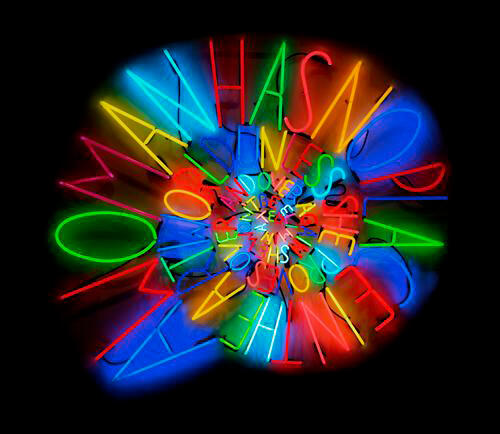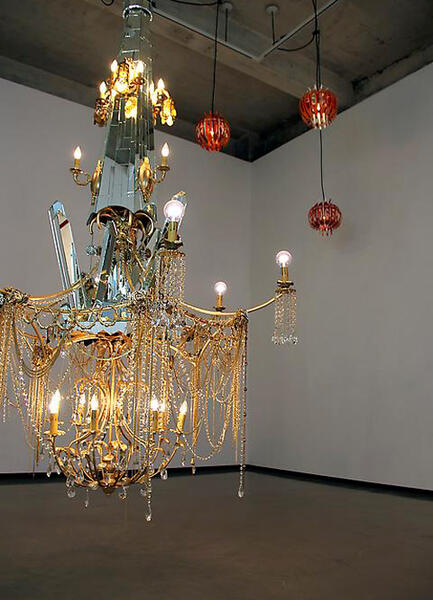_Junkies’ Promises_
Paul Kasmin, New York
Even though there is no direct connection with the narrative from the original William Burroughs’s novel Junky, there are conceptual similarities related to the notion of survival that Iván Navarro (artist / curator) uses as tropes to describe artistic creation. Improvised tactics, trickster manners and playful relations to objects usually end up collapsing into a state of failure, in both artists and junkies.

Light is the central premise of the show. Navarro’s background as a sculptor who uses light as a medium, mainly neon, is vital for a group of artists that experiment with the possibilities of interaction between light and material, and experience of these in our contemporary world. Here light is not only exposed as an enchanting matter, it is questioned as it taints our surroundings demanding specific terms from the viewer.
Most of the pieces in the show, which are divided between the gallery’s two spaces in Chelsea, share the form of ordinary objects, most of them related to the domestic world. This is a strategy used to infiltrate the domestic realm. One of the most successful pieces in this matter is Pipilotti Rist’s installation. Rist’s strategy is pure mimesis with the domestic environment, as the piece is a comfortable chair and a calm light for reading. Once you are sitting, the result of switching on the light is the turning on of a video projection on your lap. The sculpture imposes its luminous message on the viewer. In the same room we find Alfredo Jaar’s Teach Us to Outgrow Our Madness. The neon sculpture refers to the use of light as a spectacle, literally highlighting a statement that might be encouraging the endeavor of a less cerebral, loose, artistic creation.
The spectacular first room at the Tenth Avenue space contains a very particular series of chandeliers by Dzine, Josiah McElheney, Jorge Pardo, Courtney Smith, and Alejandra Prieto. Even though the installation has a critical frame and is performed under the guidance of the show premises, it can’t escape giving the impression of a lighting store on Fifth Avenue. The criticality is transferred to a direct encounter of the piece; in that way the viewer can discover unexpected materials in a familiar utilitarian and decorative object, this encounter open new possibilities for our own relation with objects. In Alejandra Prieto’s Lágrimas Negras you discover a coal alloy, and in Dzine’s Around the Way Girl, the chandelier is composed by small pieces of jewelry and glass.
The show on 27th street has a rougher edge and is slightly sharper in its criticality, crowned by Nicolas Gugnini’s Wrong, an eighteen minutes video of a performance where the artist breaks florescent bulbs against a series of projected objects, while a pianist is performing a very modern early twentieth composition. “Junkies’ Promises” is a very rich exhibition, without a doubt, one of the finest of this summer season in Chelsea.
-
 After Louise Bourgeois, 2010
After Louise Bourgeois, 2010
neon and transformers on powder-coated aluminum panel - 66 x 68 x 5 inches 167.6 x 172.7 x 12.7 cm, Edition of 6, 1 AP -
 Black Ladder, 2013, aluminum and dichoric glass, 96 x 18 x 2 inches.
Black Ladder, 2013, aluminum and dichoric glass, 96 x 18 x 2 inches.
-
 Around the Way Girl (Chandelier sculpture), lighted, hanging custom chandelier, 132 x 66 inches.
Around the Way Girl (Chandelier sculpture), lighted, hanging custom chandelier, 132 x 66 inches.




